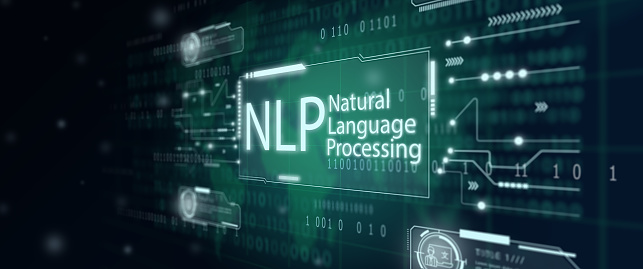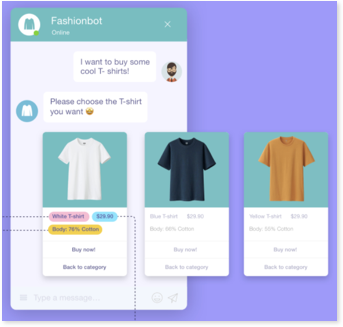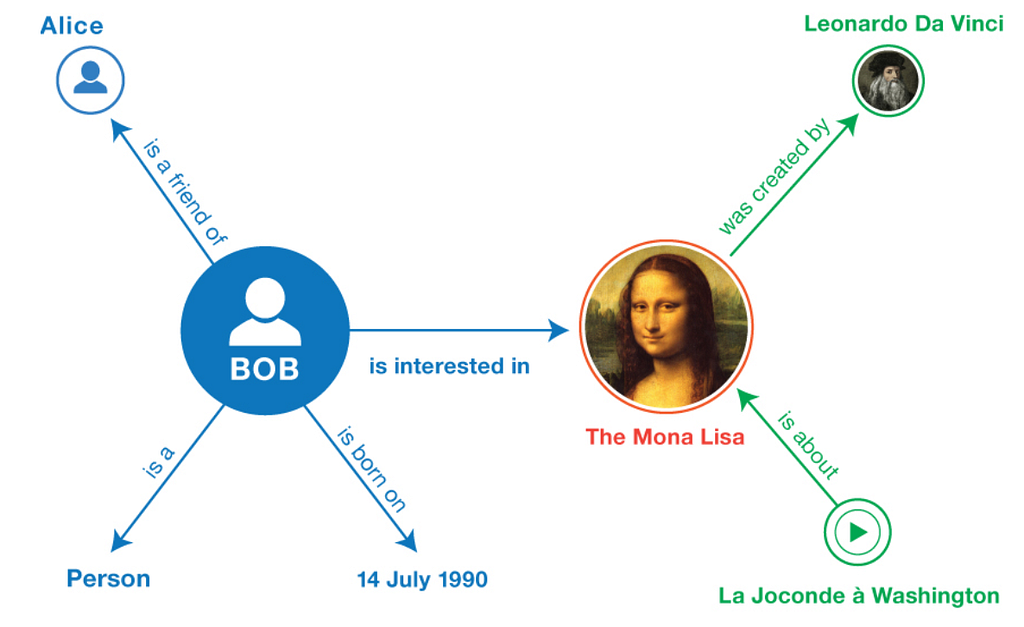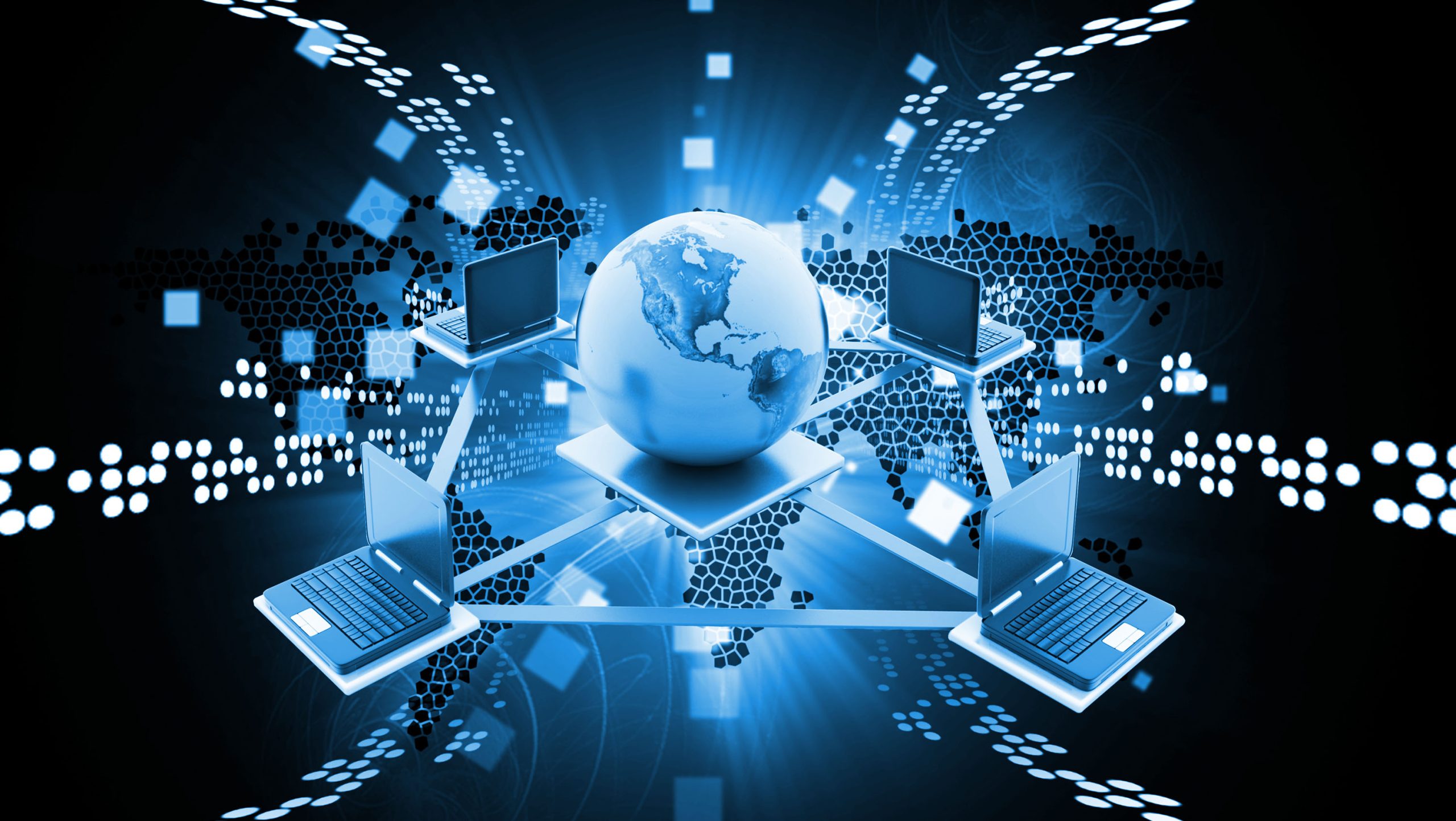But this question remains - How fast is technology advancing?
Statistics that illustrate how fast technology is growing over the years have shown breakthrough technologies from all aspects of life. Experts predict that there is more to come.
We compiled some of the most groundbreaking stats to enlighten you more on how far technology is progressing. In addition to this, we will shed more light on some of the upcoming trends, sure to leave you stunned!
Fascinating Technology Growth Statistics
The following are some eye-opening stats handpicked from the most reliable sources:
- Globally, there are about 1.35 million tech startups around the world.
- The number of smart devices collecting, analyzing, and sharing data should hit 50 billion by 2030.
- The Internet adoption rate sits at 59% in 2021.
- The computing and processing capacity of computers hits double figures every 18 months.
- The world has produced 90% of its Big Data in the past two years.
- Every second, 127 new devices are connected to the internet.
- In Q1 of 2021, 4.66 billion people are using the internet.
Sounds amazing right? That’s just the tip of the iceberg - we have more in store for you. Read on to find out!
General Technology Growth Statistics
The following are some generalized statistics about how the growth of technology is influencing every sector.
1. The internet penetration rate in the world is at 59% as of January 2021.
(Source: Data Reportal)
In the last few decades, there has been a growing telecommunications implementation. This has led to an ongoing internet usage rise.
According to technology adoption statistics, the rate stands at almost 60% as of January 2021. Compared to Q1 of 2020, the rate has gone up by 7%.
2. $183.18 billion - that is how much the web hosting services marketplace is expected to have generated by 2026.
(Source: Fortune Business Insight)
In 2017, the global web hosting market had a value of $32.12 billion, and in 2018 that figure rose to $60.90 billion. By Maintaining a Compound Annual Growth Rate (CAGR) of 15.1%, experts predict that the web hosting industry will be worth more than $100 billion in a few years as a result of global tech market growth. That's why there's such a fierce battle between the best hosting providers on the market.
3. There are 4.88 billion phone users in the world as of January 2021.
(Source: Bank My Cell)
According to technology growth statistics, 62% of the world’s population owns a mobile phone. Compared to 2020, the number of phone owners has gone up by 0.1 billion.
That includes both smart and feature phones.
Breaking down the number even further:
Smartphone owners are the majority here, amounting to 3.8 billion. On the other hand, feature phone owners are 1.08 billion.
4. By 2025, there will be 75 billion connected devices in the world.
(Source: Statista, MTA)
In 2025, the number of Internet of Things (IoT) will be thrice that of 2019. Think slow cookers, wearable technology like smartwatches, smart meters, smartphones, etc.
The technology has become so popular that industry experts predict that every consumer will own about 15 IoT devices by 2030!
5. Google got 2.5 trillion searches in 2020.
(Source: Backlinko)
As you may know, Google continues to dominate the search engine space.
When it comes to how fast technology is growing statistics, Google got more than two trillion searches in 2020 alone.
Let’s have a closer look at the numbers:
There were 81,000 searches every second in 2020. That translates to about seven billion probes per month.
6. The need to reach new customers is the primary factor pioneering technological growth in the last few years (46%).
(Source: Finance Online)
Technology adoption statistics reveal that factors such as selling new business lines (38%), overall improvement of business operations (41%), improving sales and marketing (35%), improving standard internal processes (33%), are the main drivers for tech growth.
7. By 2040, 95% of purchases will be online.
(Source: Nasdaq)
Buying over the internet is so convenient because you can get whatever you need from the comfort of your home regardless of time or location. According to technology growth stats, ecommerce will have grown so much that buyers will conduct almost all of their purchases online in the next two decades.
(Source: Backlinko)
Social media allows people to connect regardless of their geographical location and at negligible costs if you have to buy data bundles.
Lucky for you if you’re using your office or public wifi.
You’ll only have to part with $0.
According to technology statistics, for 2021, there are almost four billion social media users globally. That’s almost twice the number in 2015.
AI and Machine Learning Statistics
Technology stats and facts show that AI remains one of the most sought-after technological advancements pioneering technological growth around the world. Read on to find out some amazing stats on how AI and machine learning are impacting society.
9. Google Translate algorithm has increased its efficiency from 55% to 85% following the implementation of machine learning into its translation services.
(Source: Finance Online)
Google Translate is a service developed by Google to help customers translate text and websites to any desired language. Before the introduction of AI, it would typically take more time to translate a series of words in a foreign language, as the process is done one text at a time. However, with the application of deep learning (a sub-function of AI), the Google Translate service is now able to interpret a whole sentence or website at once.
10. The global machine learning market is expected to reach $20.83 billion in 2024.
(Source: Finance Online, Forbes)
Tech growth stats indicate that machine learning is currently one of the most popular and most successful sub-functions of AI.
It should come as no surprise that the market is growing in value. Worth around $1.58B in 2017, it is expected to reach $20.83B in 2024, growing at a CAGR of 44.06%.
11. The Compound Annual Growth Rate (CAGR) for AI will be 42.2% by 2027.
(Source: Grand View Research)
Stats on how fast technology is advancing reveal that the artificial intelligence market was worth $10.1 billion in 2018. In 2019, that value increased to $39.9.
As you can see, there has been positive growth over the years, which is likely to continue.
Giant tech firms have been pouring big bucks into research and development, the reason why technology keeps advancing every day. Examples of big names investing heavily in this sector include Facebook, Amazon, Microsoft, Google, and Apple.
Industry players predict a CAGR of 42% between the period 2020 to 2027.
12. AI will replace around 85 million jobs in the US by 2025.
(Source: Forbes)
Does automation benefit the ordinary citizen?
You be the judge.
The pandemic led to massive job losses, leaving one in every four adults in serious financial difficulty. They had issues footing their bills.
That led to 33% of Americans using their life savings to cater for their expenses. Others had to borrow loans and now have huge debts.
And it looks like the labor market hasn't seen anything yet.
AI statistics show that its adoption will lead to job losses to the tune of 85 million by the end of 2025.
However, it's not all bad:
Experts predict that there will be 95 million job openings because of artificial intelligence. By 2025, humans and machines will strike a balance of 50-50 when it comes to working.
13. Worldwide, only 37% of organizations have incorporated AI into their business.
(Source: Gartner)
Although the figure may not be high enough, it is still a significant rise from what we had in 2015 (about 270% increase).
14. Artificial General Intelligence (AGI) has a 50% chance of rising to 90% by 2075.
(Source: Zdnet)
AGI mimics human intellect. Think cooking or styling hair with precision.
Experts predict that there are high chances that in most work environments in 2075, nine out of 10 companies will use AGI technology.
15. IT hiring was 7% lower than usual in Q3 of 2020.
(Source: Dice)
IT job posting between August and September 2020 was virtually nonexistent. However, experts forecasted that it was only a small hitch that would go away in the coming months.
Technology adoption stats show that 68% of large organizations created more positions than they had in the second quarter of 2020. Therefore, it appears that smaller firms were struggling and didn't have hiring budgets.
16. The fully and semi-automatic car market will be worth $26 billion by 2030.
(Source: Electronic Design)
Experts estimate that the number of connected cars in Europe, China, and the US will be about 470 million by 2025. Technology statistics show that the vehicles will generate data worth $750 billion.
While that sounds impressive, we should think about the security aspect. The information that the technology will derive could land in hackers’ hands instead of genuine parties like manufacturers or vendors.
So:
It will be paramount for developers to come up with top-of-the-range security programs to keep cybercriminals at bay.
17. 71% of executives believe that artificial intelligence and machine learning are game-changers for businesses.
(Source: AMC Laboratories)
The world is beginning to wake up to the fact that robotics and automation powered by AI could be the future of work. However, some are more prepared than others. Those that fail to prepare may be left behind when the changes start to take effect.
18. 16% of companies in Europe believe that AI would help them counter the adverse effects of COVID-19 on labor.
(Source: IDC)
Emerging technologies and automation will be at the forefront of cushioning businesses from the effects of the pandemic. Nearly 20% of organizations say that AI will be the only solution to the current shortage of workers.
19. AI is the most significant portion of the data strategy of any business, according to 61% of marketers.
(Source: Finance Online)
Data strategy is a set of informed decisions taken from a position of insight (after careful study of available data) on how best to move a business forward. It is the job of AI to study the set of available data, and help to draw insights as to existing flaws and what needs to improve.
20. The AI market will be worth over $15 trillion by 2030.
(Source: PWC)
AI technology is progressing, and the industry is growing pretty fast. Businesses and individuals alike love its efficiency. Logically, demand will continue to rise in the coming years. By 2030, its value will be $15+ trillion. More than ¾ of emerging technologies already planned to own foundations as early as 2021.
Big Data Statistics
Data that has become so large and complicated for the traditional computer system to make sense of is referred to as Big Data. However, Big Data impact statistics have shown that it can become a goldmine to whoever understands its capacity. Check out the statistics that follow to discover the impact of Big Data on technology and internet growth.
21. Organizations that are data-driven are 23x more likely to acquire new leads than those without a data-driven strategy.
(Source: McKinsey)
Big Data can be a source of insight for those that care to put in the work, understand patterns in its data, and relate them to their various businesses. Facebook is an exemplary example of a company that is effectively utilizing both Big Data and AI to understand its audience better.
22. 91.6% of Fortune 1000 companies are investing more in Big Data and AI.
(Source: ZD Net)
Big Data is like the new gold for businesses. Coupled with AI, a good deal of information can be extracted from both structured and unstructured data. The Fortune 1000 companies know this. The most successful entrepreneurs also know this. For this reason, technology growth statistics tell us that these companies always have a specified budget put in place for data analytics.
23. Two-thirds of organizations that have utilized Big Data effectively have reportedly seen a decrease in operational expenses.
(Source: Datamation)
Big Data impact statistics reveal that for businesses that can do away with the junk of unuseful data, Big Data can provide direct and specific information about what works for such businesses and what does not. That way, these businesses can avoid the trouble of wasting time, effort, and resources on strategies that don't give results. Instead, it enables them to focus all of those energy and resources on what works.
24. We generate 2.5 quintillion bytes of data daily.
(Source: Forbes)
According to tech growth statistics, we now produce data in trillions and quintillions daily. This number has been on the rise over the last few years, meaning that we should expect to produce more in the next 2-3 years.
25. Analytics and big data will bring in an income of $274 billion by 2024.
(Source: Statista)
Revenue from big data and analytics has been on an upward rise over the last few years. By Q4 of 2021, data center Internet Protocol (IP) traffic reached 19.5 zettabytes. Business Intelligence (BI) analytics will be worth $14.5 billion in 2022.
26. By increasing their effectiveness at utilizing Big Data, Fortune 1,000 companies can increase their net income by up to $65 million.
(Source: Forbes)
According to Big Data impact statistics, the ability to extract, understand, and utilize Big Data has a direct impact on both sales and revenue. With Big Data, businesses can better understand their customers, thereby channeling their efforts towards what works and increasing conversion rates.
27. 71% of companies find it difficult to protect and manage unstructured data.
(Source: Forbes)
As enticing as the idea of Big Data analytics may seem, it still requires a lot of technical and specialized kind of skillset to make sense of the large chunk of available data. Thankfully, the best data visualization software can transform huge amounts of raw data into easy-to-digest visuals. These can provide decision-makers with valuable insights quickly and easily.
28. 83% of organizations worldwide are currently investing in various Big Data projects.
(Source: Forbes)
Given how rapidly technology is growing, and the millions of data being generated daily, top company executives are beginning to realize the usefulness of Big Data. Some even argue that failure to invest in Big Data for any business is like walking your way towards bankruptcy.
Mobile Technology Statistics
Internet traffic growth statistics tell that over the last decade, mobile usage has been on the rise, even surpassing desktop web traffic for the very first time in late 2015. Almost anything can now be achieved on mobile. Check out some of these mobile tech statistics to discover how vital technological advancements on mobile have become.
29. Over half the traffic comes from mobile phones as of Q1 Of 2021.
(Source: Oberlo)
If you’re wondering how fast technology is growing - statistics for 2022 show phone traffic has increased by 49.47% since 2011.
Back then, 93% of visitors came from the desktop, while mobile brought in a meager 6%.
However, the two went head to head in 2016, when the difference was about 1%, i.e., 48.25% for mobile and 46.93% via computers. As of 2021, cell phone browsing had surpassed that of other internet-connected devices.
30. 91% of internet users in 2020 were mobile phone owners.
(Source: Statista)
According to internet traffic growth statistics, more than half the world population was actively browsing the internet as of 2020. That translates to around four billion people. It is indeed a global village with billions of people who might have otherwise never met connecting.
31. People check their mobile phones about 150 times daily.
(Source: Business Services Week)
Call it an addiction!
The fact remains that mobile phones have become a massive part of how most of us function daily. We check our phones almost all the time for messages, notifications, time, etc.
32. Total mobile connections in 2021 amount to 10.24 billion.
(Source: Bank My Cell)
So, how's that, yet ownership is only about four billion?
Isn’t the world population 7.84 billion?
Well, there are people with dual SIM cards. Then there are those with more than one device, not forgetting integrated devices like security systems or cars.
(Source: Business Services Week)
This could be either to read up reviews of a particular product that they are about to purchase or to locate an alternative store where they can compare products and prices. Either way, this goes to show the impact of technology on how we live our daily lives. Smart business owners who understand this fact can begin to make adjustments towards mobile to boost their traffic and improve conversion rates.
(Source: Business Services Week)
Platforms like Google and LinkedIn have already implemented a mobile-first standard for their websites, and the reason for such a move is not far-fetched. Internet access growth statistics reveal that mobile drives the majority of the traffic on Google and other social media platforms.
35. Google Play and the Apple App Store have a combined 4.4 million mobile apps for download in 2020.
(Source: Statista)
90% of the mobile apps on Google Play and the Apple App Store are free to download. Notwithstanding, more businesses are beginning to understand the power of mobile apps and the amount of time consumers spend on various apps daily. Technology adoption stats show that mobile apps can help develop a brand image and improve customer loyalty when done right.
36. About 56% of parents who have kids aged between 8 and 12 years have purchased mobile phones for them.
(Source: NCL Net)
Statistics about how fast technology is growing show that kids are growing up in a technologically advanced society. Back in the '80s and '90s, who would have ever thought that a 12-year-old would own a mobile phone, let alone an 8-year-old. However, that is the reality of today's economy.
That's why solutions like parental control software are becoming more and more popular.
37. 98% of Generation Z have a mobile phone.
(Source: Global Web Index)
Technology advancement rate statistics go further to reveal that Generation X has a mobile penetration of 92%, Generation Z with 52%, and Baby Boomers with 42%.
38. Mobile advertising will reach $247 billion by 2022.
(Source: Statista)
Technology adoption stats show that advertising through mobile will reach almost $300 billion by the end of 2022. That will be a $244 billion increase from 2011 figures.
Source: (Data Reportal)
Social media is getting more and more engaging by the day. The number of new users almost hit the five hundred million mark in 2020.
40. Increasing usage of mobile banking technologies could generate up to 95 million jobs.
(Source: Leftronics)
A McKinsey Global Institute study found that over 80% of adults in developing countries owned a mobile device. However, only 55% had a bank account.
Mass adoption of mobile banking technologies has the potential to empower people financially. For one, technology adoption stats show that it can generate up to 95 million jobs and even increase GDP by a whopping $3.7 trillion by 2025.
Internet of Things (IoT) Statistics
Over the last few years, the concept of IoT has become a vital role player across various industries. More and more businesses now look to integrate its many benefits into their network infrastructures. The following are some of the most up-to-date statistics on the growth of IoT.
41. Every second, 127 new devices are connected to the internet.
(Source: McKinsey)
With the availability of affordable computer chips (sensors) through nanotechnology and the ubiquity of wireless networks, almost anything can now be made a part of the IoT according to statistics about how fast technology is advancing.
42. There are 4.66 billion internet users as of the first quarter of 2021.
(Source: Data Reportal)
Just how fast is technology advancing in 2021?
The first few months of 2021 show that 4.7 billion people are using the internet. That’s almost ¾ of people in the world, looking at it from a global perspective!
43. North America had the highest internet penetration rate globally in 2020.
(Source: Internet World Stats)
In December 2020, North America's internet access was the highest globally, at almost 90%. Europe was second with 87%, while Latin America took the third position with 72%.
Although Africa had the lowest internet penetration rates globally, it has made some significant advancements in the last few years. Its progression in the area was pretty fast that same year.
Let’s look at the numbers:
According to internet growth stats, Africa had the highest rate at 13,941%. The Middle East followed with 5,528% and finally Latin America with 2,545%.
44. Cellular IoT connections could reach 3.5 billion by 2023.
(Source: Forbes)
Cellular IoT connection is a feature that allows sensors to be able to transfer information directly to a computer or your mobile device within a region or specified distance. Health wearables that transfer the information about the state of health of a patient to a doctor or hospital is an excellent example of cellular IoT.
45. 75.44 billion IoT devices could be in existence by 2025.
(Source: Statista)
IoT statistics reveal that there were over 25 billion IoT devices around the globe at the end of 2019. Statista predicts that there could be well over 50 billion by 2023.
46. 70% of all automobiles will be connected to the internet through the Internet of Things by 2023.
(Source: Statista)
Technology statistics and findings show that the automobile industry is one of the few places where innovations in the IoT have seen significant improvements in the past few years. Aside from developing self-driving cars, research is being made to add lots of other features to the automobile industry through the Internet of Things. Soon, we could have vehicles that detect bad driving, accidents, and possibly imminent collision. In addition, cars that detect flaws in design while sending a report back to the manufacturer could also be a norm in years to come.
47. The IoT could generate up to $11 trillion in economic value per year by 2025.
(Source: McKinsey)
Statistics that illustrate how fast technology is growing show that the global usefulness and availability of the Internet of Things is increasing at a breakneck pace. The IoT can save costs, increase productivity, create employment, and bring in billions and trillions in economic value in the process.
48. Around 44% of businesses use IoT to reduce costs.
(Source: Leftronics)
IoT statistics show that more companies are pursuing smarter systems due to the technological growth in that sector.
As of 2021, about 44% of businesses use IoT devices to reduce costs. 37% of them use it to enhance operational processes, and 30% use them to grow revenue.
Interestingly, major tech websites are beginning to follow these technology trends and have started implementing similar systems.
Global Tech Market Growth Statistics
Technology touches our whole lives and has generated trillions of dollars in revenue and market size in the process. Discussed below are some incredible milestones to help you better understand the impact of technology on businesses around the world.
49. Worldwide spending on IT will amount to $3 trillion by 2021.
(Source: Statista)
Predictions show that consumers will spend upwards of $3 trillion by 2021. 33% of this budget will go to hardware, while the rest will be for apps and related software. It will be a positive growth from 2020 data which showed a slow down due to Corona when most businesses aimed at cutting costs.
50. By 2025, the wearable AI market is going to be worth $180 billion.
(Source: Semrush)
AI statistics reveal that as of 2018, the wearable AI market was already worth $35 billion. Growing at a CAGR of 30%, that figure is expected to surpass the $100 million mark by 2025.
51. Big Data could attain a market size of $77 billion by 2023.
(Source: Statista)
Big Data volume statistics have shown that I cannot overemphasize its importance. This follows as hundreds of organizations around the world are already investing directly and indirectly into its befitting features. Insights from Big Data analytics can pioneer a small startup into becoming a multinational organization within the shortest possible time.
52. Income from AI hardware will be worth $234.6 billion in 2025.
(Source: Statista)
Products in this category include storage devices, network products for Graphics Processing Units (GPU), and Central Processing Units (CPU). Forecasts show that in 2025, their market value will have surpassed that of 2018’s by around $22 billion.
53. Successful companies like Netflix have been able to save up to $1 billion monthly following the adoption of a machine learning algorithm.
(Source: Finance Online)
Netflix’s AI algorithm can accurately recommend which movies will get the attention of each user based on their interaction with the website. That way, user engagement is significantly increased, and the cancellation rate reduced, thus increasing the potential of having a user around for a more extended period. Without a doubt, Netflix's machine learning algorithm is one of the essential elements that make it one of the best streaming services out there.
54. Up to $657.31 billion would have been invested into the IoT by 2025.
(Source: Analitics Insight)
As of the end of 2019, the IoT market was already worth 193.60 billion. It could grow even further with a CAGR of 21% yearly if the technology growth rate is anything to go by.
Internet Growth Statistics
Initially designed only to interconnect government-owned research laboratories, the internet has expanded at an exponential rate over the last three decades
55. Internet users around the world spend an average of 6 hours, 42 minutes online daily.
(Source: Digital Information World)
The most recent data presented by statistics that illustrate how fast technology is growing places the average time spent online at above six hours. Countries like the Philippines and Brazil have the highest amount of time spent online daily, with 10:02 hours and 9:20 hours, respectively. The US falls a little short of the global average, clocking in at 6:31 hours daily internet time. Others like Japan and France spend the least amount of time online daily with 3:45 hours and 4:38 hours, respectively.
(Source: Statista)
How fast technology is growing statistics show that two hours and 23 minutes is the amount of time that social media users spent on their favorite networking sites in 2020. When it comes to the country whose citizens spend the highest amount of time on the sites, the Philippines came first with about 3 hours.
57. Over 4.54 billion people are active internet users out of the 7.76 billion people in the world.
(Source: Statista)
According to statistics that illustrate internet growth, the internet is growing at a pace of 11 new users per second - that is about 1 million unique users daily. Between the fourth quarter of 2018 and that of 2019, 366 million new users were added to the total number of internet users, bringing the final figure for 2019 to 4.39 billion users. However, between the end of 2019 and the first quarter of 2020, that figure has risen to more than 4.54 billion.
58. There were 1.83 billion websites in January 2021.
(Source: Web Hosting Rating)
Websites began getting popular in 2012. That year alone, businesses and individuals alike launched about one billion websites. Growth of the internet statistics indicates an upward trend, and the number has increased by approximately 800 million as of 2021.
As of 2020, there were 20 million domain registrations. That was close to a 5% increment from the last quarter of 2019.
59. 63% of 2021 internet surfers prefer Chrome.
(Source: Oberlo)
As of 2021, six out of every 10 people visiting the internet do so via Chrome. Safari, the second most popular browser, doesn’t even come close. It only has about 19% of regular users. Mozilla Firefox and Samsung Internet tie at number three, with 3.61%.
60. The global ecommerce market is set to hit $6.54 trillion by 2022.
(Source: Forbes)
As of the end of 2019, the ecommerce market already had $4.2 trillion in sales. That number is expected to grow even further given that ecommerce is becoming the most preferred form of buying and selling around the globe.
61. More than 92% of internet users now consume video content online monthly.
(Source: Data Reportal)
Online video platforms like YouTube get massive traffic on a per-second basis every day. According to statistics, up to 500 hours of video is uploaded to YouTube every minute. Also, the platform has up to 1.9 billion users.
62. The number one YouTube channel had 51.36 billion views.
(Source: Statista)
Like Nastya’s - Anastasia Radzinskaya, has slightly over 51 billion lifetime views in January 2021. Technology facts show that users find videos more entertaining and memorable. So keep that in mind, marketers!
Future Trends in Technology Growth
When it comes to future technological trends that will rule the world shortly, a few inventions come to mind. They include Blockchain, cloud computing, AR/VR, robotics, and automation. The stats that follow will expose you to some of these future technology trends.
63. There will be 8.4 billion voice assistants by 2024.
(Source: Statista)
In 2020, there were about 4 million virtual assistants. That number will double by 2024 and will be close to 8.5 billion units. The world’s human population is 7 billion, so let’s hope it’s not the dawn of the Matrix.
64. By 2025, 500 million Virtual Reality headsets would have been sold.
(Source: Forbes)
An increasing smartphone adoption rate, the automobile industry, military and law enforcement training, the gaming industry, and growing technology awareness are some of the significant factors influencing the increasing need for VR headsets.
65. 94% of the internet workload will be processed on the cloud by the end of 2021.
(Source: Network World)
Since its introduction to the mainstream market, the cloud computing trend has shown massive year-over-year growth. Experts believe that it will soon cause traditional data centers to go obsolete. As of 2018, the cloud was already housing 45% of the internet workload, and that number will rise even further in a few years.
66. The Blockchain technology industry’s revenue is predicted to hit $20 billion by 2024.
(Source: GlobeNewswire)
Experts predict that as time goes on, blockchain will find usefulness across multiple industries due to its secure and sophisticated network. Currently, there are ongoing successful experiments to combine Blockchain and Big Data to ensure uniformity and accuracy of results, especially in the insurance sector, and many more will follow in the years to come.
How Is Technology Affecting Our Lives?
There is no doubt about how vital technology has become to how we live our lives each day on earth. The technology process has made life both more comfortable and efficient for the average human. The following stats will expound more on how technology is influencing our lives in general:
67. Technology has made communication easier.
(Source: Thrive Global)
The younger generations won't remember the days when there were no mobile phones. Today, anyone can pick up the phone and place a phone call to loved ones, irrespective of their location in the world. Plus, the coming of the internet and social media has made staying connected even cheaper.
68. Technology has improved advertising.
(Source: Thrive Global)
Billboards are becoming outdated, and door-to-door advertising is said to have gone extinct. With the internet, businesses can now reach their targeted audience with ease and still obtain better conversion rates than the old system of advertising.
69. Learning is now more efficient and more comfortable to carry out with technology.
(Source: Thrive Global)
In the past, you had to scourge the library for books on specific subjects that you intend to study. Today, there are billions of videos, podcasts, audio, and text over the internet on almost anything you wish to study, making education more accessible.
Wrap Up
Technology has sure come a long way! There are billions of inventions yet to be discovered by the upcoming generations, and many more after them.
So, if you’ve ever wondered how fast is technology growing, statistics answer - lightning fast. And it is showing no signs of slowing down.
Can you imagine what life would be without technology?
Jacquelyn Bulao
May 02, 2022
Source












